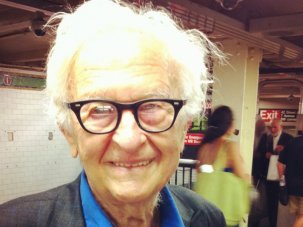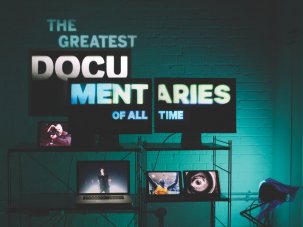When Donn Alan Pennebaker started making movies, Elvis Presley and Jackson Pollock were all the rage. When he wanted a particular piece of music for his first short film – the jazzy ode to an urban morning Daybreak Express (1953) – he showed up in person at Duke Ellington’s house to ask permission. As part of a cohort of groundbreaking New York-based documentary filmmakers, which included Robert Drew and Albert and David Maysles, he witnessed and recorded the rise of John F. Kennedy (Primary, 1960), Bob Dylan (Dont Look Back, 1967), Jimi Hendrix (Monterey Pop, 1968) and David Bowie (Ziggy Stardust and the Spiders from Mars, 1973); with the same crew he innovated a method for recording picture and sound on the go that quite flatly – no hyperbole needed – revolutionised documentary filmmaking.
Suddenly the camera could go anywhere, and simultaneously capture every stray bit of unrehearsed dialogue, from Kennedy whispering strategy on the campaign trail to Dylan making digs at a young Donovan backstage. So the fact that Pennebaker , a kindly legend mingling with first-time filmmakers to present his own new feature, Unlocking the Cage, is rather mind-blowing.
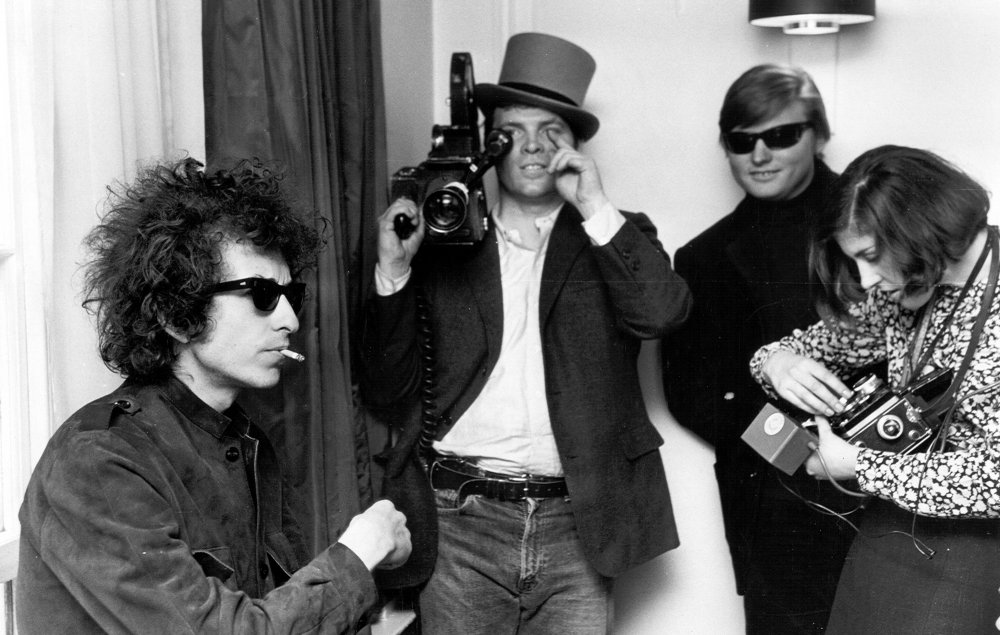
D.A. Pennebaker films Bob Dylan for Dont Look Back (1967)
That the 90-year-old Pennebaker – or Penny as he is often known – is still active and present in a contemporary film context is thanks to his longtime work and life partner, Chris Hegedus, who not only revived his career when they met in the late 1970s but seems to have been the creative motor of their partnership for the past few decades. You could put aside his storied pre-Hegedus films and still be left with one of the most important and dynamic filmographies in contemporary nonfiction. They made the best ever behind-the-scenes political film, about Bill Clinton’s 1992 presidential campaign (The War Room, 1993); one of the greatest, if criminally underrated, concert tour films (Depeche Mode: 101, 1989); and wildly entertaining documents of the times (Town Bloody Hall, their 1979 film about a panel discussion in 1971 between the writer Norman Mailer and a handful of feminists; and Startup.com, from 2001, which offers a behind-the-scenes look at the collapse of a dotcom company during the internet bubble of the early noughties) among dozens of others.
These days the 63-year-old Hegedus is still at the top of her game, emerging after years of patient observation and dogged commitment with Unlocking the Cage, which tracks the legal advances – and cultural repercussions – of activist attorney Steven Wise’s fight to establish legal personhood for chimpanzees and other ‘nonhuman animals’.
Over 90 minutes on an overcast Saturday morning in Sheffield, Pennebaker and Hegedus talked to Sight & Sound about their long careers, the birth and growth of their partnership, and how their roles have evolved over time and in light of technological advances – self-made and otherwise.
Eric Hynes: Since there wasn’t anything like a proper cinema education offered when you started, Penny, how did you wind your way to documentary filmmaking?
D.A. Pennebaker: I’d been trained as an engineer. I expected to build highways and things like that. I thought it would be how I earned a living. But working for somebody seemed difficult – I didn’t seem to get along with anybody that well.
Now I had no idea what an artist was when I was coming out of engineering school – I just thought there were people who painted pictures. Then I met a guy named Francis Thompson. He made a film called N.Y. , N.Y., an abstract film of a day in the life of New York. Working with him over a year or two, helping him finish a film he’d started, I got to understand that an artist is a person who has no master – which means you’re only responsible for your own life. And when I saw his film, I realised it was totally his work. There was never a script that he had to present to anybody, he just did it. And I thought, “I can do that.”

Daybreak Express (1953)
Is that when you made your own New York City symphony, Daybreak Express?
DAP: Yes. Basically it was based on his work.
Chris Hegedus: I came from experimental films, and Penny started in experimental films. So when we say you can make [the films] yourselves, we mean that it is one person’s vision – or a shared vision – and you don’t have to hire the industry. You can do it yourself, which was amazing.
DAP: What I began to understand was that it didn’t matter how kindly the master was. Or even how helpful he was, making your film better than it might have been. None of those things mattered. What mattered is that it wasn’t your idea any more. It had somehow become diffused.
When I worked for Life magazine, at first that was the ideal job, surrounded by all these photographers, my heroes. And Robert Drew was a terrific person to work for. The first real film I ever made was called David [1961] about a musician, and about a place where a lot of junkies hung out. Pretty soon we were all making real movies instead of artificial things for the magazine. But in the course of that, I came to a point of crisis. I realised I had to leave Life. Which was hard – it was a job. It paid me well. I had a child coming.
That happened in Kings of Pastry [a 2009 film documenting a competition between French pastry chefs], where Jackie didn’t get his life’s dream. Startup.com was a similar story. We filmed the demise of their company. And for someone like Tom [Herman], the friend they kicked out of the company, it was very painful for him to have that exposed in a film. But he also went beyond it, and did a lot of amazing things afterwards. And he also realised, afterwards, that it was the story of so many other companies.
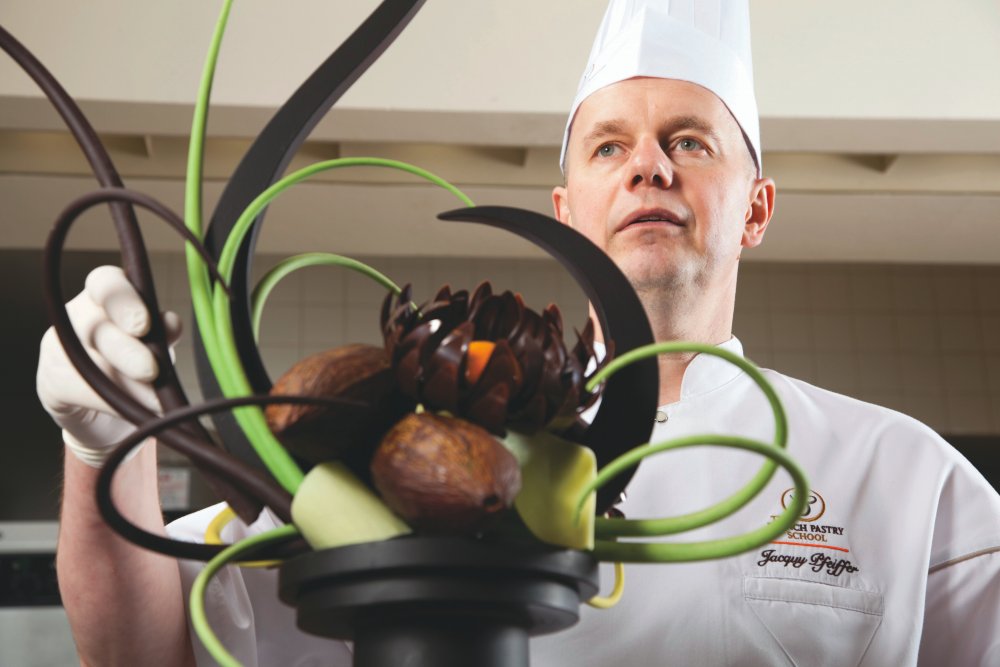
Kings of Pastry (2009)
It’s not an easy thing to do, to capture the specifics of people at a specific time and place and also have it represent something larger. Too often that’s forced, but in these it quite genuinely serves as both.
DAP: All of this is made possible by the amazing work of an invention that’s relatively recent. It isn’t just the camera – it’s the camera attached to sync sound. With this device, if you’re attentive, and really watch the action and don’t try to tell your own version of the story, you can pretty much find out what really happened. That was never around before. It can be used in ways that we’re just beginning to invent.
I would say you already invented it.
DAP: Well, I was one of the people – it wasn’t my invention alone. It isn’t just the process of how you get the sound and the picture to match, it’s what you’re able to quietly watch and not try to make a fiction film out of. I don’t think there’s going to be any limit to length or structure when certain people realise the power they have in this process.
CH: It’s the theatre of real life told in whatever way or style the artist creatively wants to do it. We did things in a very feature-length way, and films now are getting back into a serial type of storytelling, which is a little difficult for documentaries in the style we make. Life doesn’t make individual dramatic arcs all the time.

The War Room (1993)
Do you think of the edit at all when you’re shooting?
CH: I do. That’s one of the good things about being a cameraperson – you know that you’re going to need different shots to cover your story. It was especially important when we shot on film, because film rolls were only ten minutes long, and it was very expensive, so you’re always running out or starting the camera when somebody was talking to their mother. So you have to make up all these breaks in some way or another, and I’m always thinking of that. Even now, when you can film and film and film, you still have to think, “How are you going to tell this story?”
DAP: You learn how to cover yourself. You know that you’re going to need to cut a long conversation, so you look for people who are listening to fill in. It’s like learning how to write sentences. You learn how to write film sentences.
CH: It was hard on our new film, Unlocking the Cage, because we recorded over such a long period of time.
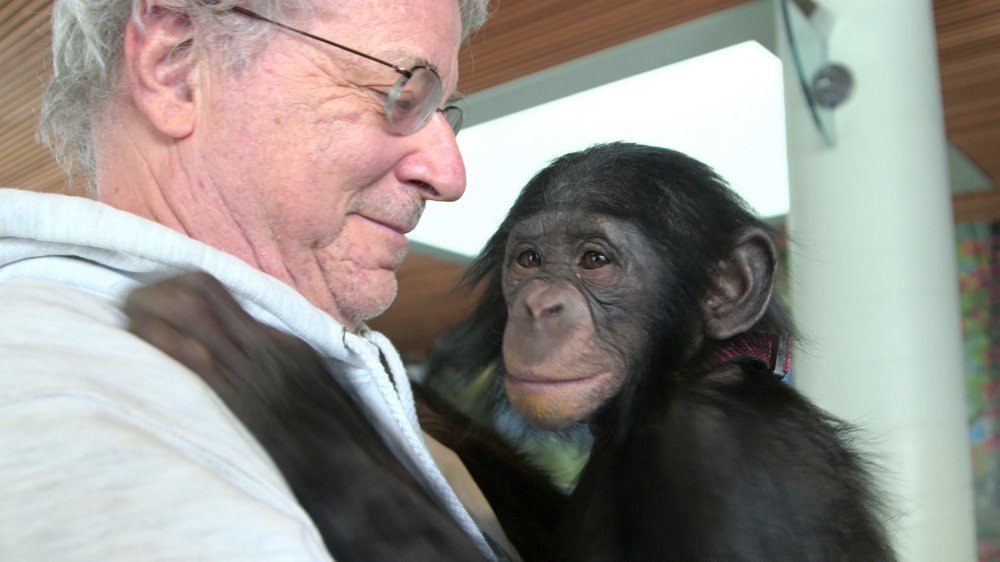
Unlocking the Cage (2016)
I would imagine that for a longer shoot like that, it would be counterproductive to think too much about shaping it into a larger narrative because you don’t know the end.
CH: But you’re forced to think about it because you have to raise money. And that’s the other massive challenge in our careers as filmmakers. How do you fund these things? For that film, I must have edited ten different selling trailers. It was a continual struggle, taking the material and condensing it and making it bigger in order to try to raise money.
What jobs do you each perform on your films, both in the filming and editing? Do you share the terrain or complement each other?
CH: Well, Penny likes to do almost no research. I might do a little more.
Why no research?
DAP: Because that’s what the film is about. That’s why you do the film, to find out what you want to know.

Depeche Mode: 101 (1989)
Credit: Adrian Boot
CH: I like to not be too totally dumb when I meet somebody, I like to know a little of their history. Penny doesn’t even care about that – because he knows I’ll do it, basically.
DAP: It’s like a line Dylan would say, “What don’t you know that you want to know?” It’s kind of like that – you don’t know what you don’t know. The doing of a film is kind of a marvellous process of continually asking questions. Only instead of questioning it personally, you’re questioning a kind of ongoing reality.
CH: For me it’s like detective work. One of us is the detective trying to find the story while shooting it. The other is trying to find it in what you’ve shot, and make it into something that gives people a sense of what our experience was like going on this journey. And then physically doing it, since we both shoot on a film. I would do sound because Penny is not a very good sound person – he’s always moving the microphone and making too much noise. In The War Room, we had this arrangement where I had radio mics on people, and I would direct Penny on what to shoot because I could hear everything that was going on.
Editing is much more difficult. We usually get divorced once or twice in the editing.
Are you in charge, generally, during the edit?
CH: In the past I would make a long rough cut of the film, and then when it’s about two hours Penny would come in and switch it around. In this film Penny didn’t edit at all.

Town Bloody Hall (1979)
Was it meaningful for you that one of the initial editing projects you inherited from Penny was Town Bloody Hall?
CH: I admired the women in the film so much. They were some of the first feminists who stood up and were writing and exploring why women should have equal rights.
Plus it was such a strange event. It really is something for the time capsule. It was a type of conversation that doesn’t happen publicly with as much passion any more. Just the outrageousness that went on during that event was incredible.
So I was very happy to have that as one of our first projects. Except it was the worst shot thing I ever saw. I don’t know what you guys were doing. It was like you were on LSD shooting a rock concert.
DAP: There were just three of us shooting it. The management of the theatre didn’t want us there – he was chasing us around and trying to get us out of there. That’s why I went up on stage, because I knew he wouldn’t follow me. So I had to do everything from behind Norman Mailer’s back.
CH: I tried to use that in the edit. To really make you feel like you were there, I left in all the swish pans and things that I would automatically cut out now from my films. But I think it gave people the impression of being in that audience, and of how raucous it was.

Startup.com (2009)
Chris, how did you start working outside of your partnership with Penny, particularly in collaborating with other filmmakers on Al Franken: God Spoke [2006] and Startup.com?
CH: Startup was a project I had initiated. I had lived in Soho in the early 70s, and was part of the whole artist movement that pioneered that area of New York, so it was interesting to me that these techie types and young venture capitalists were taking it over again in this creative way. I met [co-director] Jehane Noujaim, who hadn’t made any films but had a lot of access.
Penny and I, we were not going to make another film if we didn’t step into the digital realm, and he wasn’t really ready to do that. In some ways he’s never stepped into the digital realm, camera-wise. So I just decided to collaborate with Jehane to do that film.
Then Nick Doob, with whom I made the Al Franken film, has been a partner for many years. It just seemed the two of us should go off and do it.

Al Franken: God Spoke (2006)
Penny, was it hard for you that Chris went off and collaborated with those other filmmakers?
DAP: No. The ideal kind of arrangement for people who are partnering is that when you find something that joins you, you do it. And if you want to do something that’s not joining you, you should be able to do that too. You’re not in jail. Freedom is what you need the most. Because that’s the only way you can let the creative part of you come up and be visible.
CH: But I missed my collaboration with Penny, and that’s why, among many other things, I decided to do Kings of Pastry with him. Even though he didn’t do that much of it, I wanted him to be a part of it.
And on Unlocking the Cage, he was kind of our mascot. He didn’t come for many of the shoots or come to the editing room. But on a project that took as long as Unlocking the Cage, Penny was always the cheerleader, saying, “Yes, this is a good idea, you need to keep going forward.” And I need that. Because I’m kind of the pessimist in the relationship, and Penny’s the eternal optimist.
Why the aversion to shooting digital, Penny?
CH: The cameras have too many little buttons.
DAP: Yeah, my camera had only one button: start and stop. That was about all I could accommodate.

Only the Strong Survive (2002)
CH: We shot a few concert films in which we put the [digital] camera on his shoulder, set it up and had him shoot. He shot Down from the Mountain [a 2000 film showcasing a live performance by the musicians behind the soundtrack for the Coen brothers’ O Brother, Where Art Thou?] and Only the Strong Survive [a 2002 portrait of soul singers from the 60s and 70s playing live] that way. We used bigger cameras for those, and had lenses that resembled film cameras.
DAP: The one thing I wanted when I made my own camera was the ability to go on a stage or out to the desert. I wanted it to be totally uni-usable. There was no camera like that. Once I figured out how to do it, I loved the idea that I could go anywhere with it.
CH: Penny made me a camera. We had ‘his and hers’ cameras in the early days.
DAP: Hers had a green holder on it rather than a red one.
CH: He made me one of the types of cameras they shot Monterey Pop with, which was really nice. We had those together.
DAP: You make a film like you make a baby. There’s no alternative to what’s going to happen. I never experienced that before I met Chris. For me that was an awakening of sorts. I can’t compare it to anything else.
-
Sight & Sound: the August 2016 issue
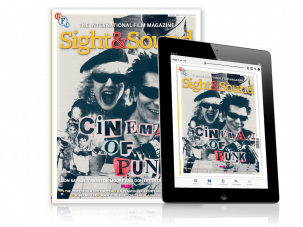
Jon Savage, Thurston Moore and Don Letts on 40 years of punk. Plus the changing shape of cinema distribution, Chevalier, Born to Be Blue, and the S...
-
The Digital Edition and Archive quick link
Log in here to your digital edition and archive subscription, take a look at the packages on offer and buy a subscription.





